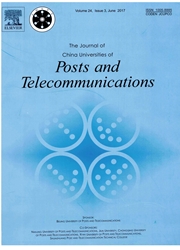

 中文摘要:
中文摘要:
We have studied the effects of nearby Na Cl solution on the performance of ultra high frequency(UHF) radio frequency identification(RFID) tags, using simulations and measurements. The main reason for the decrease of read range in proximity to Na Cl solution is the antenna gain penalty. The boundary conditions near the surface reduce antenna efficiency and antenna gain. With the conductivity of the Na Cl solution increasing, the read range of the RFID system decreases. A theoretical formula is proposed for the read range to calculate the material losses of tag antenna. The formula establishes relationship between conductivity and read range of RFID system. The maximum read range is also calculated theoretically with simulation software. In addition, we develop an experimental measurement technique to certify the feasibility of the derived formula, which involves a dynamic measurement system. Consequently, the experimental results are found to be in good agreement with theoretical data.
 英文摘要:
英文摘要:
We have studied the effects of nearby Na Cl solution on the performance of ultra high frequency(UHF) radio frequency identification(RFID) tags, using simulations and measurements. The main reason for the decrease of read range in proximity to Na Cl solution is the antenna gain penalty. The boundary conditions near the surface reduce antenna efficiency and antenna gain. With the conductivity of the Na Cl solution increasing, the read range of the RFID system decreases. A theoretical formula is proposed for the read range to calculate the material losses of tag antenna. The formula establishes relationship between conductivity and read range of RFID system. The maximum read range is also calculated theoretically with simulation software. In addition, we develop an experimental measurement technique to certify the feasibility of the derived formula, which involves a dynamic measurement system. Consequently, the experimental results are found to be in good agreement with theoretical data.
 同期刊论文项目
同期刊论文项目
 同项目期刊论文
同项目期刊论文
 期刊信息
期刊信息
